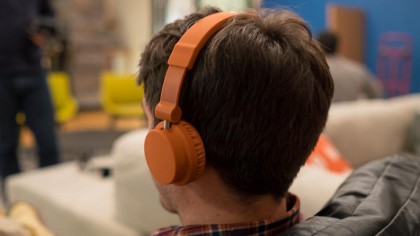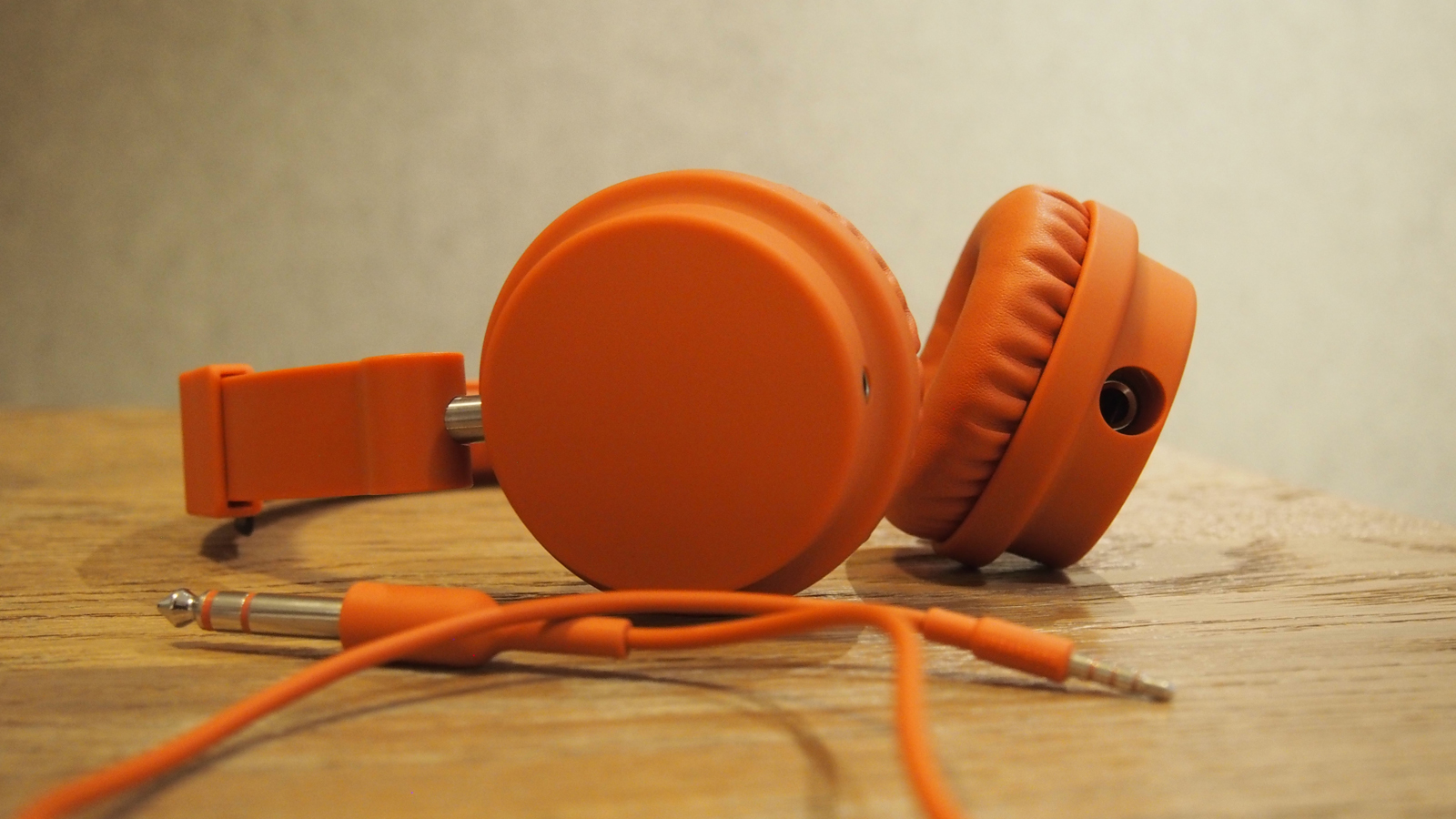TechRadar Verdict
Aside from the iconic design and appealing splash of color, there's not much else saving these on-ear headphones from being a poor value overall.
Pros
- +
Fun design
- +
Handy music-sharing feature
Cons
- -
No volume controls
- -
Subpar sound performance
Why you can trust TechRadar
When it comes to looks, Urbanears headphones are right up my alley. I'm a sucker for their simplistic design and pastel paint jobs. Based on the amount of people I've seen wearing these headphones, it seems that I'm not alone in my admiration of their style.
The new $99 (£89, AU$129) Zinken on-ear headphones boast the signature Urbanears vibrancy and have a minimal, but useful set of features. But do the Zinken bring enough comfort and performance to make a mark on the scene, or has it all been glossed over?
Design
The Urbanears Zinken, while a little ridiculous to say aloud, are easy on the eyes with a smooth matte-finished look. The headphone materials come together with a near-uniform blend of plastic, synthetic leather and touches of metal for added stability and flair.

The Zinken - and all Urbanears headphones, for that matter - look as if they have been plunked into a pool of paint. The color of our review model is "Rowan", a color inspired by the exotic berries of the mountain ash shrub. Let's cut the embellishment and call it "orange".
The air hockey mallet-sized earcups have a decent range of motion. Attached seamlessly to a band of colorful plastic on one side and pleather padding on the other, these earcups can swivel about 45-degrees to each side, thanks to sturdy, cylindrical metal sidearms, which allows the earcups to be folded into the headband for a more compact form factor.
Design aside, the earcups are also packed with some clever functionality. On the bottom of each cup is a different size of audio input. The partially-coiled TurnCable included in the box is uniquely equipped with a 3.5mm input on one end and 6.3mm on the other. If you are listening to music on a standard device, you'll utilize the 6.3mm input under the left earcup. Alternatively, utilizing the 3.5mm port on the right requires that you connect to a device that supports a 6.3mm input.

The TurnCable has an inline remote, but it serves a limited purpose. While it allows you to play/pause songs, skip forward and backwards and to talk on the phone, Urbanears bafflingly omitted volume controls. No one ever needs to adjust the volume, right?
Sign up for breaking news, reviews, opinion, top tech deals, and more.
Urbanears has crafted the Zinken to be your catch-all headphones, whether you're scratching vinyl or jamming on a commute. They've also included a cool social feature called ZoundPlug. This allows anyone to hook up to your unused earcup input to listen in on what you're enjoying. The Monster Inspiration Lite also perform a similar function. It's not groundbreaking by any means, but it puts an end to the need for a y-splitter.
Holding these headphones all together is the headband. It's surprisingly stiff and requires a bit of effort to widen to my head size, which on the spectrum of head sizes is rather large. There's not much to see here, but it continues the colorful tour with the same materials as we saw in the earcup. The durable metal sidearms provide peace of mind, but I worry about the degradation of the plastic components over time.
Performance
Although Urbanears have only been in the business of making headphones since 2009, it has landed on an appealing, iconic design and stuck with it. If only the company had struck gold on the side of audio performance.
The rock song "Here Comes Everybody" by Autolux is presented by the Zinken in pale fashion. The spacey vocals and crunchy guitar work don't come through to full effect. A song that works more in favor of the Zinken's strengths is "good kid" by Kendrick Lamar. The cans reproduce the deep thumps of hip-hop decently, but again, the mids and highs fall behind.

Not everyone will find something to complain about with the Zinken, but in contrast to their crisp and vibrant design, the cloudy and flat delivery of the sound is only emphasized further. Sometimes it all came together to warmly pump out a tune, but these were one-off encounters.
Your comfort-level wearing the Urbanears Zinken, as is the case with all headphones, will depend on preference. I typically enjoy the on-ear experience, and don't consider it a flaw if a slight adjustment is necessary for comfort as time goes by. The Zinken aren't the most comfortable set of on-ear headphones I've used, but I can get along during my commute just fine.
We liked
The heart and soul of the Zinken are its design and color. While most headphones are chock full with obnoxious branding, these are refreshingly clean of identity. Actually, it's that stark lack of branding that makes them stand out even more.
The interesting functionality enabled by the ZoundPlug and TurnCable boost the Zinken's versatility and are simple, but welcome features. No need to share earcups with friends on the subway or bus anymore.
We disliked
Despite these additions, for $99, the Urbanears Zinken are a plain, feature-poor option in a market full of better values. While the design is redeeming, the rest of the Zinken package, namely the muddy sound performance, doesn't make a convincing enough argument to go with Urbanears next time around.
If you're looking for better sound quality, the JBL Synchros E40BT offers stellar performance at the same price point with wireless Bluetooth connectivity and sharp build quality on top of it all.
Final verdict
So long as these continue to be sold in Urban Outfitters, people will continue to buy the Urbanears Zinken. And it's hard to blame them, they look awesome. But educated audio lovers deserve to know that they can do much better, especially for the $99 asking price.

Cameron is a writer at The Verge, focused on reviews, deals coverage, and news. He wrote for magazines and websites such as The Verge, TechRadar, Practical Photoshop, Polygon, Eater and Al Bawaba.
